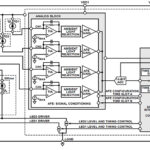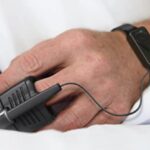Unlike an oxymoron (äksəˈmôrˌän: a combination of contradictory words), a (pulse) oximeter (äkˈsimidər) is a sensing technique to measure oxygen saturation in a person’s peripheral (capillary) blood (SpO2). Using pulses in the capillaries of the tested area, the noninvasive measurement helps to evaluate a variety of medical conditions that affect the function of the heart and lungs. The most common measurement area is on a finger but an earlobe or other places are also used.

Common healthcare situations for oximeter usage include:
- During or after surgery or procedures that use sedation
- To see how well lung medicines are working
- To check a person’s ability to handle increased activity levels
- To see if a ventilator is needed to help with breathing, or to see how well it’s working
- To check a person has moments when breathing stops during sleep (sleep apnea)
Oxygenated blood is a brighter red than the deoxygenated blood, which is more blue-purple. Using this principle, an oximeter measures the sum of the intensity of both shades of red, representing the fractions of the blood with and without oxygen. The measurements include detecting the pulse in a capillary using a beam of infrared light to make a color intensity measurement, making a second measurement when the pulse is absent and then subtracting the second from the first. The calculated value is displayed on an electronic screen as a percentage of oxygen saturation in the blood. Ideal pulse oximetry readings range from 95 to 100%. Values below 88% are considered dangerous.





